I was asked on social media to create a physical disability book list, and I want to start by pointing my readers to an excellent blog that covers all kinds of disabilities in KidLit, aptly named Disability in KidLit. It’s my go-to for understanding if authors get it right when it comes to this topic.
I also have two blog posts on wheelchairs in children’s books here and here. I’ve pulled some book lists from #MGGetsReal, a list of 166 middle grade books with difficult situations. The rest of the books, I’ve researched and read.
What I’ve learned from these books is how capable the characters with physical disabilities are. I guess it’s natural for loved ones to over-assist, but in these books, it is often the ones with special needs that, in carving their own path of competency, help others find their own abilities and inner strengths.
Please help me add to this list! Thanks for your suggestions!
p.s. I have two wheelchair book lists here and here. My favorite books from these lists are:
Books for Kids with Hearing Impairment
Moses Goes to a Concert by Isaac Millman
Moses goes to a special school for the deaf and they are taking a field trip to a concert. But how can they hear the music? His teacher, Mr. Samuels, has two surprises for them at the concert! [picture book, ages 5 and up]
My Monster Truck Goes Everywhere With Me by Kathleen Marcath, illustrated by Isaac Liang and Pardeep Mehra
A boy loves to play with his monster truck toy and takes it everywhere with him until one day, it goes missing. This picture book is illustrated using American Sign Language shown in the images. Additional resources include ASL videos and free downloadable worksheets accessible through the QR code in the back. [picture book, ages 4 and up]
El Deafo by CeCe Bell
What is it like to lose your hearing? Cece Bell shares her own story of hearing loss and struggles with her very large but powerful hearing aid, which allows her to hear but also makes her look different. In learning to accept her hearing aid, Cece Bell also discovers that it’s our differences that are also our superpowers. [graphic novel, ages 9 and up]
Rocky Road by Rose Kent
Tess Dobson is moving to Schenectady, New York, another one of her hair-brained ideas from her bipolar single mother. Her younger brother is hearing impaired so that leaves just her to keep the family together. When her mother’s dream of owning an ice cream parlor goes south, can she pull together her new friends, both young and old — they are living in a retirement village — to save the business? [middle grade, ages 9 and up]
Hurt Go Happy by Ginny Rorby
This is my least favorite book on this list, but I include it because it covers a lot of different themes that readers might find appealing: animal rights, physical abuse, and deafness. The story actually probably covers too many themes which makes the story more plot than character-driven. Thirteen-year-old Joey Willis is partially deaf as the result of physical abuse by her father when she was six years old. Her mother, who has left her husband, won’t let Joey learn sign language so when she discovers an older man with a chimpanzee who can sign living near her, her life changes. This older man grew up with hearing-impaired parents, and now his rescue chimpanzee is being raised like his child. When he dies, Joey must find a way to make sure the chimpanzee ends up in a safe home. Fans of The One and Only Ivan and/or The War That Changed My Life will find connections to this book (though it’s not as well-written as either of those books). Hurt Go Happy is based on a true story. [middle grade, ages 10 and up]
@mama.keiki.reads from Instagram says, “I’m partway through Hello, Universe, which is about a girl with hearing aids.”
Hello, Universe by Erin Entrada Kelly
“In one day, four lives weave together in unexpected ways. Virgil Salinas is shy and kindhearted and feels out of place in his crazy-about-sports family. Valencia Somerset, who is deaf, is smart, brave, and secretly lonely, and she loves everything about nature. Kaori Tanaka is a self-proclaimed psychic, whose little sister, Gen, is always following her around. And Chet Bullens wishes the weird kids would just stop being so different so he can concentrate on basketball.” [middle grade, ages 8 and up]
The Collectors by Jacqueline West
From Ms. Yingling Reads:
“Giovanni lives in New York City with his mother, who is an opera singer. His father was a set designer, and the one thing “Van” has kept through all of their moves to different cities is the maquette his father had- a small stage with curtains. He finds objects out on the street and uses them to reenact scenes on the stage. His frequent moves, as well as the fact that he is hard of hearing, occasionally make it difficult for him to make friends, so when he runs into Pebble in the park, he feels a connection to her. She’s a bit odd, wearing a long coat in the warm weather, but he follows her and eventually finds out that she is part of a group of Collectors who gather wishes and keep them safe in an underground facility. He also meets Mr. Falborg, who collects a number of different things, including Wish Eaters. He claims that Pebble’s group is trying to starve and abuse the Wish Eaters, who are little, tiny, and cute, and he gives Van a Wish Eater of his own to keep. Since he needs to feed it wishes, he wishes for a number of things in order to feed it, but wishes are unpredictable. For example, his mother is dating the father of Peter Grey, who doesn’t like Van very much, so he wishes that the two parents wouldn’t be together, and his mother gets a job at La Scala in Italy. When he then wishes to stay in New York, something happens to his mother to prevent her from traveling. The Collectors are after Van, and when they finally corral him, he finds out more information about what is going on, and decides which side he needs to be on.” [fantasy middle grade, ages 8 and up]
Signs of Survival: A Memoir of the Holocaust by Renee Hartman and Joshua M. Greene
Review by Ms. Yingling Reads:
“The two girls lived in Bratislava, Czechoslovakia. Due to a hereditary condition, Herta and the parents were deaf, and Renee acted as a translator for them. Herta briefly attended a school for deaf students, but when the Nazis took over, Jewish children were not allowed to go to school. As conditions in the city worsened, the girls were sent to a farm to be cared for in exchange for a hefting boarding fee. When the parents stopped writing, the girls were turned out of the house and left on their own. They turned themselves in to the local law enforcement, not knowing what else to do, and were supposed to be sent to be reunited with their parents at Auschwitz. Instead, they ended up at Bergen Belsen and endured many hardships. Renee managed to keep Herta safe from guard as well as the medical establishment that wanted to experiment on her. After the war, it took some time to regain their strength, but eventually, relatives in the US brought the girls over, and they made lives for themselves here.
Like Ruth Gruener’s Out of Hiding and Rena Finder’s A Girl on Schindler’s List, this memoir offers a less graphic overview of one experience of the Holocaust that is a good introduction to the era for younger readers. Herta’s deafness adds another layer of interest; the only other book I can think of that covers this topic is LeZotte’s T4: A Novel in Verse (2008). The Holocaust is a perennially popular topic, even though our eighth-grade curriculum might no longer cover it.”
Chapter Books with Seeing Impairment
Apt. 3 by Ezra Jack Keats
For those who recognize Ezra Jack Keats from The Snowy Day, this is a much darker version of that world. Two brothers live in a gloomy apartment building that is full of noises including arguing, yelling, and crying, but also mysterious and beautiful music. Undaunted, the brothers search for the music when a sharp voice startles them. They are in a blind man’s apartment, worried that they will be accused of stealing milk. Instead, the man knows them from the sounds they make which reveal their secrets. In turn, he shares these secrets via his harmonica … the source of that beautiful music! This is the beginning of their friendship. [picture book, ages 4 and up]
Granny Torrelli Makes Soup by Sharon Creech
12-year-old Rosie has grown up with her best friend Bailey. He’s been seeing impaired since birth, and Rosie always wants to help, even if it isn’t appropriate. But it’s not all one-sided. When Rosie is bullied by mean girls who hit her with books, Bailey comes to her rescue. Rosie has been working on a secret for a year, learning Braille to surprise Bailey. When he isn’t pleased, Rosie is hurt and angry. With homemade soup that she makes with her grandmother, Rosie fixes the temporary rift with Bailey.
Now there is an issue with a new girl who also wants to learn Braille to impress handsome Bailey. Granny Torrelli is the ultimate wise Italian grandmother, Nonna, who knows that good food and storytelling will fix all ills. Granny Torrelli has had a similar experience, and she tells her own story as she, Rosie, and Bailey make pasta and sauce from scratch together. It’s a multi-day endeavor and by the end, the pasta party has set things right. In fact, the experience has made Rosie a little wiser and her world a little bigger. This book reads as easily and pleasantly as sitting down to the warmth and love of a homemade Italian dinner that only a grandmother could make. [middle grade, ages 8 and up]
A Blind Guide to Stinkville by Beth Vrabel
Fans of The Seven Wonders of Sassafras Springs by Betty Birney will love this similarly themed book about discovering the stories of individuals that give a small town its heart. In this case, 12-year-old Alice has moved to Sinkville (a.k.a. Stinkville due to the bad odor from the paper mill that permeates the town) with her family. Her albinism also affects her vision, and her family grapples with this newest change. Her mother battles depression, her father works all the time, and her brother has difficulty adjusting. As Alice makes new friends, she wants to show everyone, including her parents who want to send her to a special school for the blind, that her blindness doesn’t define or limit her. It’s through the Sinkville Essay contest that Alice will discover that everyone is connected and that there is more good than bad that defines this town that is beginning to feel like home. [middle grade, ages 8 and up]
A Dog Called Homeless by Sarah Lean
The voice in this book is not as strong as Granny Torrelli Makes Soup and A Blind Guide to Stinkville and it’s not necessarily because the protagonist simply stops talking. The plot is a little complicated which makes the story less of a draw for readers who need to be pulled into a story immediately. Cally Fisher’s family is grieving after the death of her mother a year ago, and now the repercussions are unsettling the family. Cally sees ghosts and stops talking. Her father sells the house, moves the family to an apartment, and won’t talk about her mother. Cally’s new neighbor’s son, Sam, is blind and partially deaf. He helps her pursue a dog called cared for by Jed, a homeless man. In the end, the dog is the key to the family’s healing. It’s complicated. It’s a tough year. But a death in the family is like that. [middle grade, ages 8 and up]
From Ms. Yingling Reads:
Squint by Morris Chad and Shelly Brown
Flint, who is very interested in drawing comic books, is now usually called “Squint” by his classmates because he is suffering from a degenerative eye disease that affects his corneas and gives him very poor vision. His classmates, who used to be friendly, now bully him. When McKell suddenly starts talking to him, he is wary that her motives are also devious, but she is friendly and invites him on a hike. She is kind, and Flint soon finds out that it is because her brother suffers from progeria and has a YouTube channel where he challenges people to go out and do things that he can no longer do. When Flint’s eyes become so bad that he is eligible for a cornea transplant, he is out of school for a while, and upon his return, he realizes that McKell has been out, too. Her brother has passed away, and she struggles with her grief and loss. Flint has been trying to finish a comic to submit to a contest, but once his vision improves, he fears it isn’t very good. McKell is also shy and beset with anxiety over her own talents. She writes and performs music with a ukulele. She and Flint spend more time together and encourage each other to break out of their boxes and take chances. [chapter book, ages 8 and up]
And she suggests a few more books:
There are not many books about children with impaired sight (Although Vrabel has both A Blind Guide To Stinkville and A Bind Guide to Normal, and there is the classic Beverly Butler Light a Single Candle (1962)
Middle Grade with Disfiguration
Freak the Mighty by Rodman Philbrick
My son read this in 6th grade as part of his assigned reading. He said it was a good book which makes me take note as he is very particular about books. He didn’t mention that one of the characters has a physical disability — Freak has a little body and uses crutches and leg braces — but what you really notice about Freak is his big personality and his mighty brain. Freak transforms Max from a misunderstood Neanderthal into a swaggering duo they dub Freak the Mighty.
With Freak on Max’s shoulders, they are mighty in ways that transcend what would be expected of them individually. Together, they face danger in the form of Max’s estranged father and bullies. Ultimately Freak is able to unlock Max’s own perception of himself, freeing him from Disabled Learning and teaching him about his own abilities when no one else can get through. While the ending includes loss, it is ultimately uplifting.
Pair this with Junkyard Wonders by Patricia Polacco for a picture book version of a similar storyline. The strong voice and rapid pacing of this book will draw in even the most reluctant reader. [middle grade, ages 9 and up]
Wonder by R.J. Palacio
After being homeschooled all his life, 10-year-old August “Auggie” Pullman is starting 5th grade at a private middle school in his Upper East Side neighborhood. He wonders if anyone will realize that he’s just a normal kid underneath his severely disfigured face, an affliction he was born with. His middle school classmates are challenged to “be kinder than is necessary” but can they? Will they? In this uplifting story, it turns out that everyone carries some kind of disfigurement that feels isolating, even though most can’t be seen. Readers will cheer for Auggie as he experiences acts of kindness that do indeed change his world. [middle grade, ages 8 and up]
Physical Disabilities Affecting Walking
Rescue and Jessica: A Life-Changing Friendship by Jessica Kensky and Patrick Downes, illustrated by Scott Magoon
Jessica lost both her legs as a result of the Boston Marathon bombs and this is her story of healing and the assistance dog, Rescue, who is by her side today. Their story is one of resilience, hope, and most of all, friendship. Because, after all, dogs are man’s best friend. [picture book, ages 4 and up]
Dorothea Lange: The Photographer Who Found the Faces of the Depression by Carole Boston Weatherford, illustrated by Sarah Green
Dorothea Lange had childhood polio which left her with a limp, but also a sense of empathy that shaped her view from behind the camera. Her famous photo of a migrant mother and her kids has a backstory: the family was stranded and starving after rains had destroyed the pea crop. Dorothea’s powerful image was published in the newspaper, and then the government rushed ten tons of food to the camp. Lange captured powerful images of The Great Depression and Japanese Americans in internment camps. She also documented the conference that created the United Nations. Read this inspiring picture book biography that shows the power of art in the fight for social justice. [picture book, ages 5 and up]
Dorothea Lange’s iconic 1936 photograph, Migrant Mother
Dorothea’s Eyes: Dorothea Lange Photographs the Truth by
The War That Saved My Life (Trilogy) by Kimberly Brubaker Bradley
Ten-year-old Ada is not allowed to leave her cramped apartment because her abusive mother is ashamed of her club foot. When children in London are evacuated to the countryside to escape the bombing, Ada’s younger brother leaves and she secretly joins him. In this new home with Susan Smith, Ada gets to experience life for the first time. The bond between Ada, her brother, and Susan Smith deepens, but what will happen when the war ends? [middle grade, ages 9 and up]
Her Own Two Feet: A Rwandan Girl’s Brave Fight To Walk by Meredith Davis and Rebeka Uwitonze
Pair this story with The War That Saved My Life. Rebeka Uwitonze was born with club feet and was unable to walk. At nine years old, she gets an offer for a life-changing medical procedure from U.S. doctors, but this means leaving all that she knows behind to travel to America on her own. Rebeka’s brave fight to walk will inspire those who take chances and also those who give back to help others. [middle grade, ages 8 and up]
In Your Shoes by Donna Gephart
Great review by Ms. Yingling Reads:
“Amy has just moved to town to live with an uncle after her mother’s death. Her father will come eventually, but he is getting training to work in her uncle’s funeral parlor and only visits on some weekends. She is leery of starting school, especially since she thinks people notice that one of her legs is longer than the other. When she is hit in the head with a rogue bowling shoe on her way into the building on the first day, she takes this as a bad omen and starts writing a fairy tale involving the incident. The wearer of the shoe, Miles, is mortified, even though it’s his friend Randall’s fault. Miles is an anxious young man who feels most at home at the family bowling alley, although even there is a sadder place since the death of his grandmother. He’s trying to bowl a perfect game, would sort of like to ask a girl to the school dance, and is saving up for a special present for his grandfather’s 75th birthday. Amy doesn’t have that hard of a time at school and even meets a like-minded friend, Tate, who is into weightlifting and knitting. Randall has a crush on Tate and is trying to figure out a fun way to ask her to the dance, and Amy often wanders off to the bowling alley to have a hot chocolate and escape the funeral home. She enjoys bowling with Miles, although the regular shoes make her hip hurt. As the grandfather’s birthday party and the school dance approaches, the four children learn more about each other and develop even closer relationships, which help them cope when things don’t always go well. [middle grade, ages 9 and up]
After Ever After by Jordan Sonnenblick
Being cancer-free is not without serious side effects. Jeffrey is a teen in remission but walks with a limp, and can’t focus or retain math concepts. Tad, his cancer survivor buddy, is in a wheelchair. Still, Tad understands what it’s like to cope with “chemo-brain” and unwanted sympathy. Together they challenge each other. Tad will tutor Jeffrey so he can pass the math standardized test, and Tad will exercise so that he can accept his diploma by walking across the stage. Their agreement brings about changes, but when Tad’s cancer returns, all bets are off. [young adult, ages 12 and up]
Physical Disabilities and Communication Special Needs
Out of My Mind by Sharon Draper
My kids have a lot of special needs classmates and my middle daughter in particular was drawn to stories about walking in those shoes. She particularly identified with Draper’s Out of My Mind about a girl with cerebral palsy who can’t communicate easily but has an astonishing unknown gift of a photographic memory. When she joins an academic competition school team, she’s the ringer that can help bring her team victory, but can they get past her special need and see her for who is really is? The realistic ending makes the reader a champion for special needs kids and that is what makes this book so powerful. [chapter book, ages 10 and up]
Gadget Girl by Suzanne Kamata
@melissa.uchiyama.946 from Instagram suggested another book with cerebral palsy: “Another great one is Gadget Girl by Suzanne Kamata, introducing a rad main character with cerebral palsy.
“Aiko Cassidy is fourteen and lives with her sculptor mother in a small Midwestern town. For most of her young life Aiko, who has cerebral palsy, has been her mother’s muse. But now, she no longer wants to pose for the sculptures that have made her mother famous and have put food on the table. Aiko works hard on her own dream of becoming a great manga artist with a secret identity. When Aiko’s mother invites her to Paris for a major exhibition of her work, Aiko at first resists. She’d much rather go to Japan, the Manga Capital of the World, where she might be able to finally meet her father, the indigo farmer. When she gets to France, however, a hot waiter with a passion for manga and an interest in Aiko makes her wonder if being invisible is such a great thing after all. And a side trip to Lourdes might just change her life.” [young adult, ages 12 and up]
Rules by Cynthia Lord
Disabilities in KidLit has a review that, in my opinion, really illuminates the problems with how special needs characters are portrayed. Here is a portion of her review based on Jason, a minor character in the book who is in a wheelchair and has communication limitations:
“Jason is given better treatment than David: he is given more agency and slowly gains more independence. When we are first introduced to Jason, he is in a manual wheelchair that he cannot wheel himself, and is completely reliant on others for mobility. Mobility aids, especially power wheelchairs, are incredibly expensive, and I understand that not everyone is able to afford them or access funding. However, especially since Jason’s parents purchased a power wheelchair for him later on, it makes little sense that he starts off with no independent mobility. As a wheelchair user, my independent mobility is incredibly important to me. While I use a manual wheelchair, my impairments extend to my entire body, which can make it difficult to wheel my chair on my own, especially where I live. I do everything I can to maintain my ability to push my chair since I can’t afford a power chair. Without independent mobility, you can only go where others are willing to take you when they want to take you. You become almost completely reliant on others. It is a very frustrating and difficult place to be put into, and I was so frustrated to see Jason put into this position.
Jason also uses a communication book to talk, as he is nonverbal, and routinely attends speech therapy. Although he seems to have no interest in speech therapy and communicates fine without speech, the focus is on him learning to speak. That both David and Jason are forced to try to be as “normal” as possible, and that this is never criticized, is something that is harmful to disabled people, who experience this daily.” [chapter book, ages 8 and up]
Indeterminate Physical and Mental Disability
Half a World Away by Cynthia Kadohata
Twelve-year-old Jaden is not an easy adoptee for his family. He’s emotionally disconnected and now his parents want to add a new younger brother for him from Kazakhstan. It’s not easy to choose at the orphanage but Jaden finds himself drawn to a toddler with severe special needs. It’s not the baby that his parents want but it’s the first time he finds himself able to care about someone else. Could it be that he needs this toddler as much as this child needs him? But what about the baby his parents have already committed to? [middle grade, ages 10 and up]
Father in Wheelchair
Ms. Bixby’s Last Day by John David Anderson
Ms. Bixby’s Last Day has that same raw emotional pull that makes you want to hug this book forever in your heart. Celebrating a teacher who made a difference, it tells the story of three boys who do something out of their comfort zone to let their beloved teacher understand how much she meant to them. The weaving of the three voices as their stories unfold is not as seamless or tightly woven as a Newbery winner tends to be, and that is why I don’t think it will win, but I urge everyone to read it and gift it to teachers that you know who are making a difference. [middle grade, ages 8 and up]
Thank you to my friends on Instagram who suggested more books. All reviews are from Amazon.
@AnneElizabethUrsu
Nomad by William Alexander
“Gabe Fuentes is in a race against time—and aliens—in this intergalactic sequel to Ambassador, which Booklist called “an exciting sci-fi adventure, perceptively exploring what it means to be alien,” from National Book Award winner William Alexander.” [middle grade, ages 8 and up]
The Collectors by Jacqueline West
“The Collectors sweeps readers into a hidden world where wishes are stolen and dreams have a price. Fast-paced, witty, and riveting, this contemporary fantasy adventure has magic woven through every page.” [middle grade, ages 8 and up]
The Schwa Was Here by Neil Schusterman
“They say his clothes blend into the background, no matter where he stands. They say a lot of things about the Schwa, but one thing’s for sure: no one ever noticed him. Except me. My name is Antsy Bonano, and I was the one who realized the Schwa was “functionally invisible” and used him to make some big bucks. But I was also the one who caused him more grief than a friend should. So if you all just shut up and listen, I’ll tell you everything there is to know about the Schwa, from how he got his name, to what really happened with his mom. I’ll spill everything. Unless, of course, “the Schwa Effect” wipes him out of my brain before I’m done…” [young adult, ages 12 and up]
@ms.walk.gifted.togo
Rules by Cynthia Lord
@estevens03 & @tanyaguerreroauthor
Out of My Mind by Sharon Draper
@CarlaMolina201
Lucky Broken Girl by Ruth Behar
“Ruthie Mizrahi and her family recently emigrated from Castro’s Cuba to New York City. Just when she’s finally beginning to gain confidence in her mastery of English—and enjoying her reign as her neighborhood’s hopscotch queen—a horrific car accident leaves her in a body cast and confines her to her bed for a long recovery. As Ruthie’s world shrinks because of her inability to move, her powers of observation and her heart grow larger and she comes to understand how fragile life is, how vulnerable we all are as human beings, and how friends, neighbors, and power of the arts can sweeten even the worst of times.” [middle grade, ages 10 and up]
@Kelly.Tackett & @h_shaffer
The War That Saved My Life by Kimberly Brubaker Bradley
@bluestockingthinking
I, Funny by James Patterson
“Jamie Grimm is a middle schooler on a mission: he wants to become the world’s greatest standup comedian, even if he doesn’t have a lot to laugh about these days. He’s new in town and stuck living with his aunt, uncle, and their evil son Stevie, a bully who doesn’t let Jamie’s wheelchair stop him from messing with Jamie as much as possible.
But Jamie doesn’t let his situation get him down. When his Uncle Frankie mentions a contest called The Planet’s Funniest Kid Comic, Jamie knows he has to enter. But are the judges only rewarding him out of pity because of his wheelchair, as Stevie suggests? Will Jamie ever share the secret of his troubled past instead of hiding behind his comedy act?” [middle grade, ages 8 and up]
@LittleLibraryNook & @h_shaffer & @mama.keiki.reads & @tanyaguerreroauthor
Insignificant Events in the Life of a Cactus by Dusti Bowling
“Aven Green loves to tell people that she lost her arms in an alligator wrestling match or a wildfire in Tanzania, but the truth is she was born without them. And when her parents take a job running Stagecoach Pass, a rundown western theme park in Arizona, Aven moves with them across the country knowing that she’ll have to answer the question over and over again.
Her new life takes an unexpected turn when she bonds with Connor, a classmate who also feels isolated because of his own disability, and they discover a room at Stagecoach Pass that holds bigger secrets than Aven ever could have imagined. It’s hard to solve a mystery, help a friend, and face your worst fears. But Aven’s about to discover she can do it all . . . even without arms.” [middle grade, ages 8 and up]
@h_shaffer
Rescue and Jessica: A Life-Changing Friendship by Jessica Kensky and Patrick Downes, illustrated by Scott Magoon
Ugly by Robert Hoge
“When Robert Hoge was born, he had a tumor the size of a tennis ball in the middle of his face and short, twisted legs. Surgeons removed the tumor and made him a new nose from one of his toes. Amazingly, he survived—with a face that would never be the same.
Strangers stared at him, kids called him names, and adults could be cruel in their own ways. Everybody seemed to agree that Robert was “ugly.” But Robert refused to let his face dictate his entire life. Then, when Robert came face to face with the biggest decision of his life, he followed his heart. This poignant memoir about overcoming bullying and thriving with disabilities shows that what makes us “ugly” also makes us who we are.” [memoir middle grade, ages 8 and up]
The Running Dream by Wendelin Van Draanen
“Jessica thinks her life is over when she loses a leg in a car accident. She’s not comforted by the news that she’ll be able to walk with the help of a prosthetic leg. Who cares about walking when you live to run?
As she struggles to cope, Jessica feels that she’s both in the spotlight and invisible. People who don’t know what to say act like she’s not there. Jessica’s embarrassed to realize that she’s done the same to a girl with CP named Rosa. A girl who is going to tutor her through all the math she’s missed. A girl who sees right into the heart of her.
With the support of family, friends, a coach, and her track teammates, Jessica may actually be able to run again. But that’s not enough for her now. She doesn’t just want to cross finish lines herself—she wants to take Rosa with her.” [young adult, ages 12 and up]
Tangerine by Edward Bloor
“Paul Fisher sees the world from behind glasses so thick he looks like a bug-eyed alien. But he’s not so blind that he can’t see there are some very unusual things about his family’s new home in Tangerine County, Florida. Where else does a sinkhole swallow the local school, fire burn underground for years, and lightning strike at the same time every day? The chaos is compounded by constant harassment from his football–star brother, and adjusting to life in Tangerine isn’t easy for Paul—until he joins the soccer team at his middle school. With the help of his new teammates, Paul begins to discover what lies beneath the surface of his strange new hometown. He also gains the courage to face up to some secrets his family has been keeping from him for far too long. In Tangerine, it seems, anything is possible.” [middle grade, ages 10 and up]
@nawone “My kids loved El Deafo!”
@leilaboukarim “Just finished El Deafo with my son. It’s excellent.”
@Saffron Press “Also check out Books for Littles by @ashia.ray – There is a wealth of resources. @littleparachutes also have resources listed on their website under disability.”
To examine any book more closely at Amazon, please click on image of book.
As an Amazon Associate, I earn from qualifying purchases.
Follow PragmaticMom’s board Multicultural Books for Kids on Pinterest
Follow PragmaticMom’s board Children’s Book Activities on Pinterest.
My books:
Food for the Future: Sustainable Farms Around the World
- Junior Library Guild Gold selection
- Selected as one of 100 Outstanding Picture Books of 2023 by dPICTUS and featured at the Bologna Children’s Book Fair
- Starred review from School Library Journal
Amazon / Barefoot Books / Signed or Inscribed by Me
 Amazon / Scholastic / Signed or Inscribed by Me
Amazon / Scholastic / Signed or Inscribed by Me
BEST #OWNVOICES CHILDREN’S BOOKS: My Favorite Diversity Books for Kids Ages 1-12 is a book that I created to highlight books written by authors who share the same marginalized identity as the characters in their books.

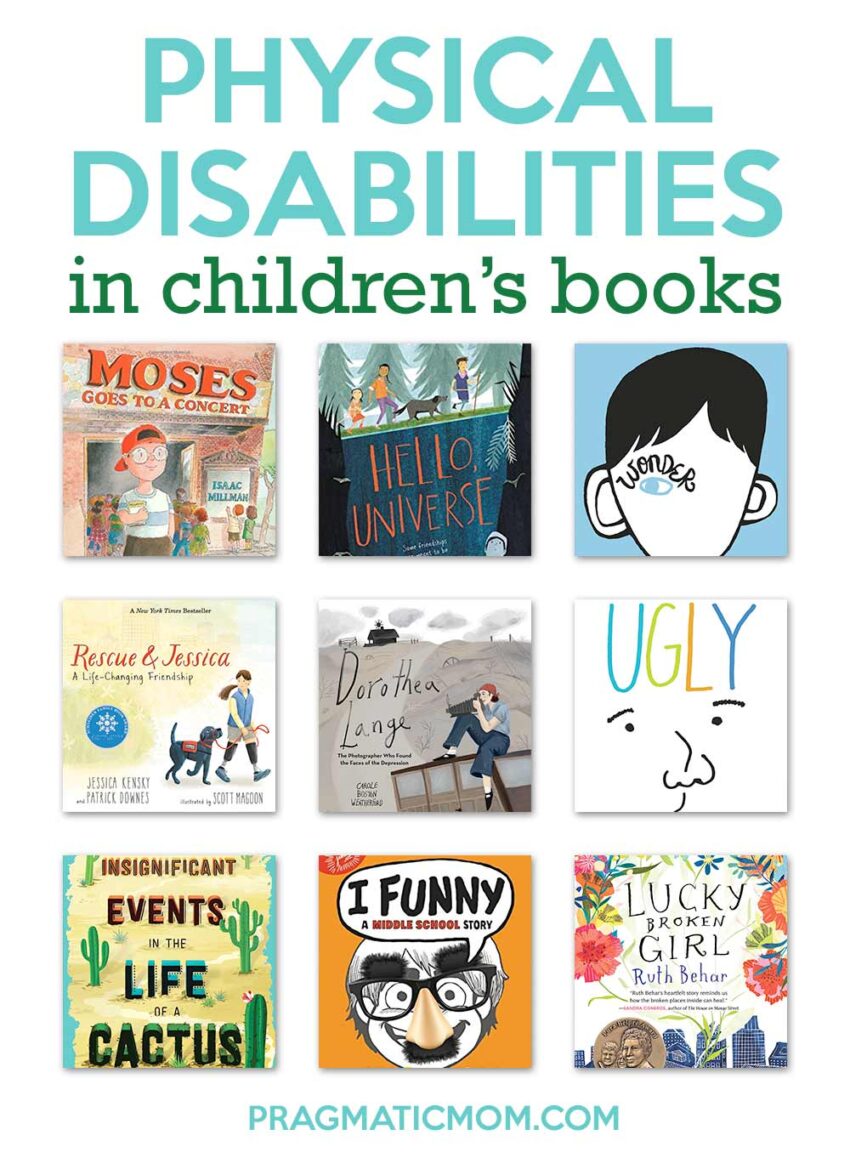

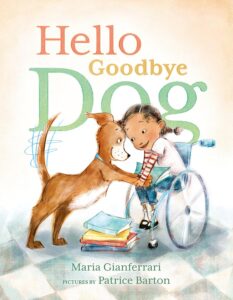




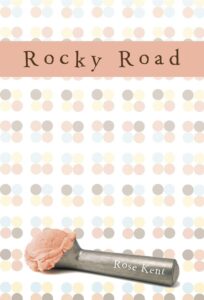




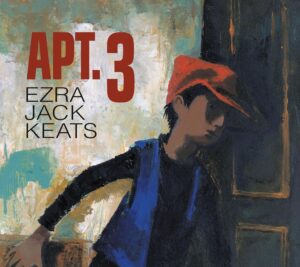

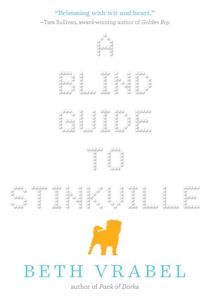
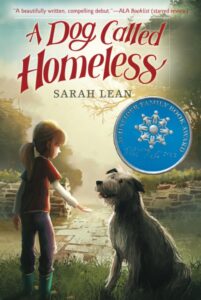
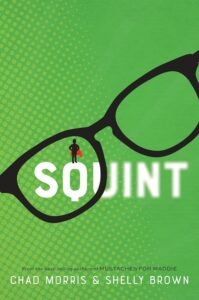

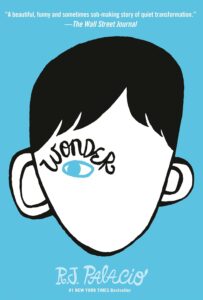




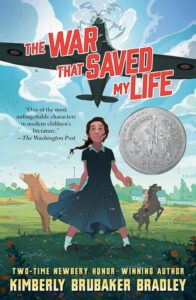




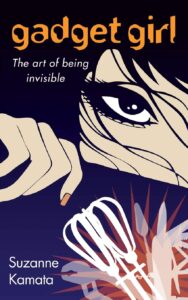
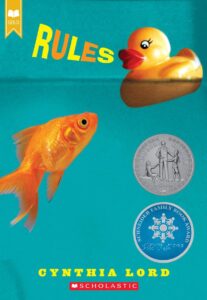






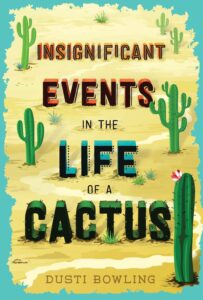

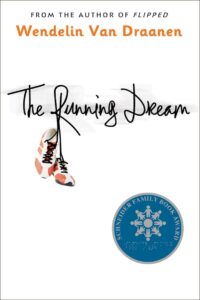



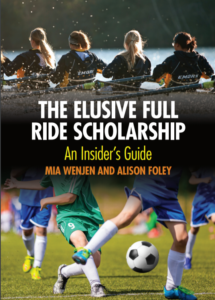


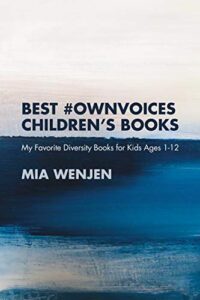

I have some questions about your review of Rules by Cynthia Lord. You write ” . . since Jason’s parents purchase a power wheelchair for him later on, it makes little sense that he starts off with no independent mobility. As a wheelchair user, my independent mobility is incredibly important to me. ”
I agree that independence is important. While I have not read Rules, I do know, from my grandson, that many children lose upper body strength as part of their condition, i.e. Spinal Muscular Atrophy. They become unable to move their own chairs – and have to wait for a power chair to give them that freedom again.
What am I missing?
Hi Valerie,
Rules by Cynthia Lord won both a Schneider Award and a Newbery Honor book but the book comes under scrutiny in Disabilities for KidLit: http://disabilityinkidlit.com/2015/04/12/review-rules-by-cynthia-lord/
Here is the paragraph that breaks down the wheelchair issue for Jason:
“Jason is given better treatment than David: he is given more agency and slowly gains more independence. When we are first introduced to Jason, he is in a manual wheelchair that he cannot wheel himself, and is completely reliant on others for mobility. Mobility aids, especially power wheelchairs, are incredibly expensive, and I understand that not everyone is able to afford them or access funding. However, especially since Jason’s parents purchase a power wheelchair for him later on, it makes little sense that he starts off with no independent mobility. As a wheelchair user, my independent mobility is incredibly important to me. While I use a manual wheelchair, my impairments extend to my entire body, which can make it difficult to wheel my chair on my own, especially where I live. I do everything I can to maintain my ability to push my chair since I can’t afford a power chair. Without independent mobility, you can only go where others are willing to take you, when they want to take you. You become almost completely reliant on others. It is a very frustrating and difficult place to be put into, and I was so frustrated to see Jason put into this position.”
Thanks for including Hello Goodbye Dog on this great book list, Mia!! I’ve read many, but not all of these books. Must catch up!!
Hi Maria,
Let me know of you can think of any more books to include! I plan to update this list as I come across more books.